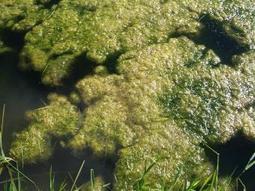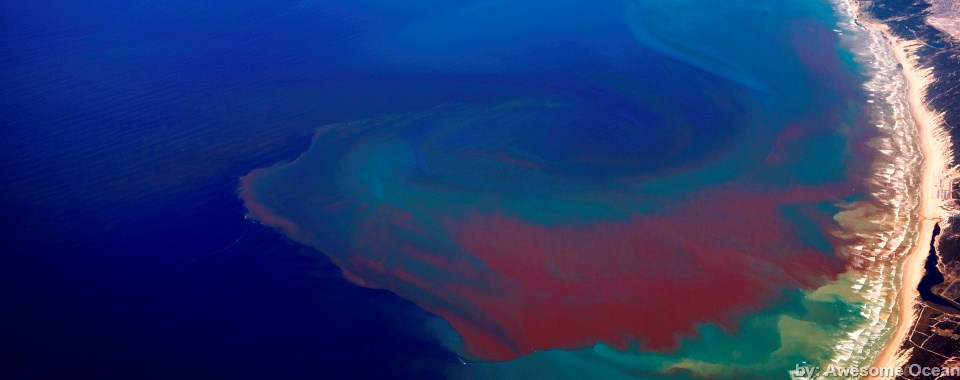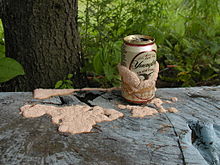In this chapter, We are going to talk about Kingdom Protista. Click The Lecture tab to watch video lecture.
[tabby title=”Material”]
Features and Characteristics of Kingdom Protista
- All are unicellular and eukaryotic.
- Primarily aquatic. It can also live in moist places.
- Some have cilia or flagella.
- Forms a link with the others dealing with plants, animals, and fungi.
- Reproduce asexually and sexually by a process involving cell fusion and zygote formation.
Classification of Kingdom Protista
Broadly the Protista Kingdom is classified into chrysophytes, Dinoflagellates, Euglenoids, Slime Moulds, and Protozoans. Let’s see the characteristics of these types below
Chrysophytes

- Includes diatoms and golden algae (desmids)
- Photosynthetic – Plant Like Protists but no roots, no leaves.
- They are found in freshwater as well as in marine environments.
- Mostly planktonic (passive swimmer)
- Cell walls overlap to fit together like a soapbox.
- Cell wall contains silica hence indestructible.
- Their accumulation forms ‘Diatomaceous Earth’.
- Used in polishing, filtration of oils and syrups.
- Diatoms are the chief ‘producers’ in the oceans.
Dinoflagellates

- Lives in Marine – Plant Like Protista
- Nutrition mode is photosynthetic.
- Cell wall has stiff cellulose plates.
- Appears in various colors such as green, blue, yellow, brown, or red depending on the pigments.
- Have two flagella.
- It forms the basis for aquatic food chains.
- Red Dinoflagellates (Gonyaulax) form red tides in the sea.
Euglenoids

- Fresh Water Organisms – Plant Like Protista
- No cell wall but instead have pellicle which makes them flexible.
- Has two Flagella which makes them move like an animal.
- Photosynthetic by nature but capable of becoming Heterotrophs when deprived of sunlight.So Euglenoids exhibit both plant(photosynthetic) and animal behaviors(can move with flagella).
Slime Moulds
- Fungus-Like Protista which is a decomposer.
- Nutrition mode is saprophytic.
- The body moves along decaying leaves.
- Under suitable conditions, aggregate itself to become plasmodium(which can grow several feet)
- In Unsuitable Conditions, plasmodium breaks up and reproduces by bearing spores at the tip.
Protozoans

- Animal-Like Protists are Called as Protozoans
- Nutrition mode of protozoans is heterotroph.
- Live as Parasites on another host.
- Four Major Groups of Protozoans classified based on the way they move are Amoeboid protozoans, Flagellated Protozoans, Ciliated Protozoans, Sporozoans
- Amoeboid protozoans move with a false leg and are also called as pseudopods. Example – Amoeba
- Flagellated Protozoans move with flagella. Causes sleeping sickness disease. Example – Trypanosoma
- Ciliated Protozoans move with the help of thousands of its cilia. Example – Paramoecium
- Sporozoans move freely and has spores. Example – Plasmodium. Causes Malaria when Plasmodium is injected by Malaria Bite.
[tabby title=”Lecture”]
Video Transcription for Kingdom Protista Video
The kingdom Protista includes an incredible diversity of different types of organisms which includes algae, protozoans, and slime molds. All protists are eukaryotes having complex cell structure with nuclear membranes and organelles like chloroplasts and mitochondria. Protista Kingdom organisms are either unicellular or multicellular.
Some protists are autotrophs for example algae. It manufacture their own food by photosynthesis or chemosynthesis some protists such as protozoans are heterotrophs who eat by phagocytosis they engulf the food particle which is enclosed by an extension of the cell membrane this hollow region of the cell is called a vacuole other modes of nutrition such as saprotrophic and parasitic are also shown by these Protists.
Protists are so small that they do not need any special organs for the exchange of gases or for the process of excretion they rely on simple diffusion where substances move across the cell membrane from the region of the high concentration to the region of their low concentration.
All protists are aquatic and can move through water with the help of flagella cilia or pseudopodia. For example euglena moves with the help of flagella. Paramecium with the help of cilia while amoeba uses pseudopodia.
For the purpose of locomotion protists reproduce asexually by binary fission and a few species are capable of sexual reproduction protists are categorized into three groups protozoa algae and slime moles protozoans are unicellular heterotrophic organisms found in fresh or saltwater some of the most popular protozoans are amoeba and Paramecium the second category of protists is algae which are photosynthetic organisms some of the most popular algal protists are called diatoms.
[tabbyending]
Subject: Biology (4253)
Important MCQs Based on Medical Entrance Examinations To Improve Your NEET Score
18000+ students are using NEETLab to improve their score. What about you?
Solve Previous Year MCQs, Mock Tests, Topicwise Practice Tests, Identify Weak Topics, Formula Flash cards and much more is available in NEETLab Android App to improve your NEET score.
Share this page with your friends


Leave a Reply